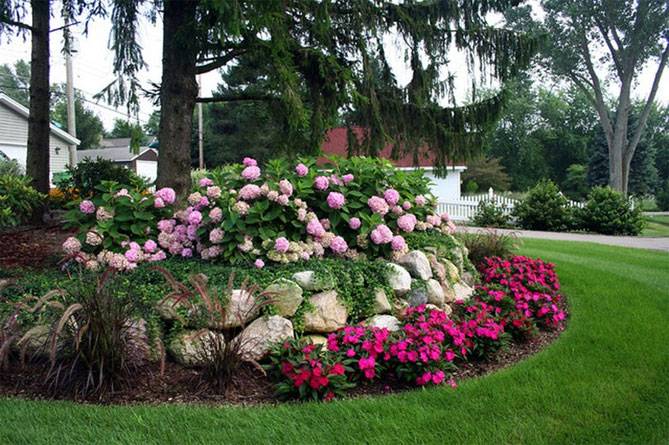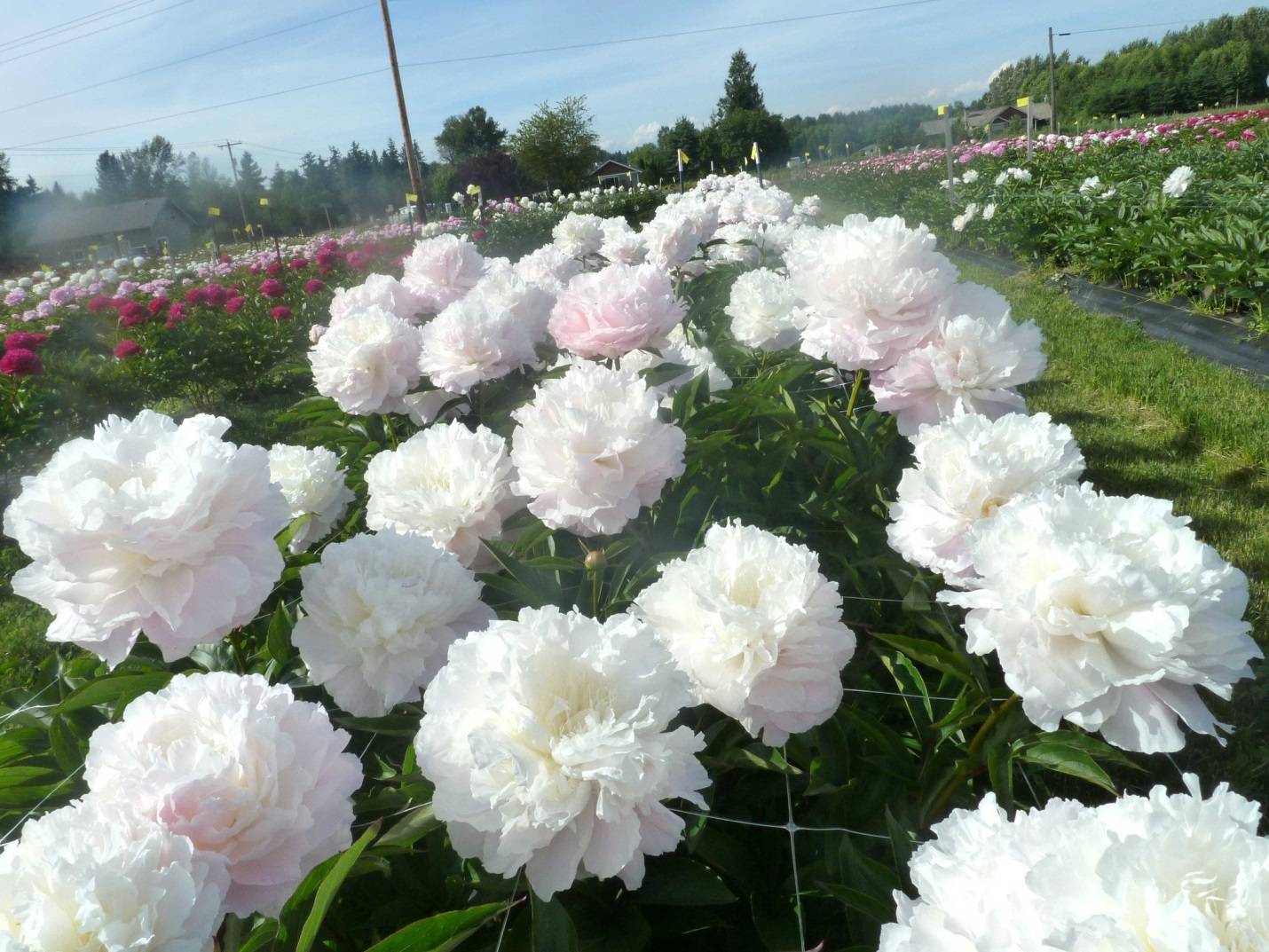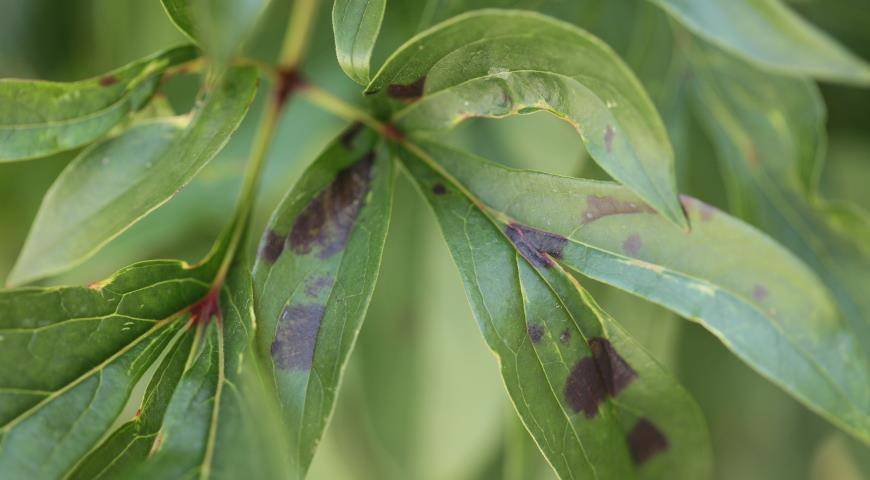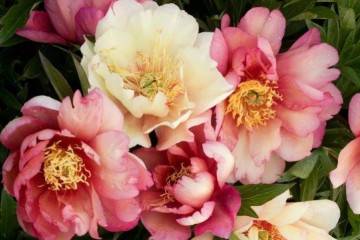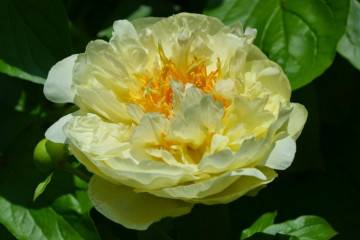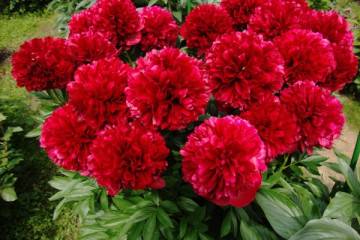Peony Shirley Temple (Paeonia Shirley Temple)
Content:
The Shirley Temple peony is a popular ornamental variety that is often used to decorate the garden. The culture is characterized by lush double flowers of a spherical shape. They have a distinct aroma.
Peony Shirley Temple (Paeonia Shirley Temple) - what kind of variety, history of creation
The plant is the result of American selection. The culture was bred in the middle of the 20th century by crossing the Festival and Mm Edward Doria varieties. The hybrid got its name from Hollywood actress Shirley Temple. In this case, the plant is sometimes mistakenly called Temp.
A brief description of the peony by Shirley Temple
Paeonia Lactiflora Shirley Temple belongs to the herbaceous crop category. It is characterized by dense semi-double inflorescences with a diameter of 20 cm. They are distinguished by a light pink color. Some time after flowering, peonies acquire a pure white hue.
The flower includes concave petals that resemble scales. The peony is characterized by stable peduncles that do not need support. They reach a height of 70-80 cm. Thanks to this, the bush is able to maintain its shape and does not collapse under a mass of large inflorescences.
The plant is characterized by openwork dissected leaves. They decorate the bushes until autumn, becoming crimson.
Advantages and disadvantages of the variety
The key benefits of culture include:
- excellent decorative characteristics;
- excellent frost resistance;
- the ability to use in landscape design;
- pleasant aroma;
- the possibility of using flowers to create floristic compositions.
At the same time, the Shirley Temple peony also has certain disadvantages. It can suffer from pest attacks or the development of diseases. Therefore, it is so important to carry out preventive treatments in a timely manner.
Use in landscape design
Milk-flowered peony can be used for single plantings or group compositions. In the first case, the culture looks more impressive. When used in combination with other plants, it is worth using a flower for decorating rabatki, mixborders, flower beds. An excellent option would be to use the plant to decorate rock gardens, gazebos, large tracts.
The culture fits perfectly with modern or classic garden designs. It can be combined with other varieties of peonies. It also looks impressive in combination with irises, daylilies, poppies. Bells, barberry, carnations can be used as additions.
Growing a flower, how to plant it in open ground
To succeed in growing a crop, you need to study the basic rules of agricultural technology.
Planting by root cuttings
When propagating a plant, it is worth choosing the right method. Vegetative cultivation methods are considered the best options.
The easiest way to plant the plant is with root cuttings. They can be purchased ready-made. In this case, it is worth paying attention to the quality of the planting material. There should be no damaged fragments, mold, or traces of rot on it.
What time is the boarding
The crop can be planted in late August or September. A later autumn planting is also acceptable, but it needs to be suspended before the beginning of November.
Location selection
The culture needs well-lit open areas. At the same time, in extreme heat, the bushes need to be shaded a little. Do not plant peonies near tall trees or bushes.
How to prepare the soil and flower for planting
Planting peonies requires a deep hole that can accommodate the growing roots of the plant. Even in loose soil, proper drainage must be organized. It should consist of gravel, crushed stone, sand.
To provide the plant with food, you need to pour 3 buckets of humus, a little wood ash and half a glass of mineral fertilizers into the recess. All components should be mixed well with earth.
Planting procedure step by step
After carrying out the preparatory work, you can start planting. To do this, you need to do the following:
- place the seedling in the center of the recess;
- sprinkle with soil so that the upper buds are at a depth of 3-4 cm;
- compact the soil;
- water and cover with a mulch layer of dry humus, bark, sawdust.
Seed planting
Seed propagation of a plant is usually carried out for breeding purposes. This is a rather complicated and time-consuming process. Therefore, novice growers most often use the division of the bush.
Plant care
In order for a peony to grow and develop normally, it needs to be provided with quality care. It should include the correct irrigation regime, fertilization, pruning.
Watering and feeding
Peonies need moderate watering. In this case, it is not recommended to allow the soil to dry out. Spring watering is of particular importance. In the fall, you also need to moderately moisten the soil. It is during this period that the buds are laid for the next year. In summer, 2 buckets of water should be poured under the bush every 2 weeks.
In the early years, the plant needs fertilizing with mineral fertilizers, which are applied by the foliar method. Adult crops are fed 3 times during the season. In this case, the preparations are applied by the root method.
In the spring, it is recommended to spread fertilizers over the melting snow. After that, it is necessary to fertilize the plants during the period of bud formation and 2 weeks after the end of flowering.
Mulching and loosening the soil
To retain moisture in the soil, it is necessary to mulch. For this, sawdust, peat, fallen leaves are used. Systematic soil loosening is of no small importance. It helps to saturate the plant roots with oxygen and nutrients.
Preventive treatment
During its development, a culture may encounter the development of fungal infections. To avoid this, it is worth carrying out preventive treatment of the plant with fungicides. You can also use folk remedies.
Peony Blossom Shirley Temple
The peony of this variety is characterized by long and abundant flowering. In order for the plant to retain its decorative effect as long as possible, it needs high-quality care.
A period of activity and rest
Peony bloom begins in early summer and continues throughout the warm season. The rest period begins with the arrival of cold weather.
Care during and after flowering
In order for the culture to retain its decorative properties as long as possible, it is necessary to establish an irrigation regime. Timely fertilization is of no small importance. You need to feed the bushes at the stage of bud formation and some time after the end of flowering.
What to do if it does not bloom, possible reasons
The lack of flowering can be due to the following factors:
- violation of the irrigation regime;
- improper fertilization;
- lack of lighting;
- improper planting;
- wrong choice of soil for planting.
Peonies after flowering
After the end of the flowering period, the culture requires specific care. This will help keep it decorative for the next year.
Transfer
This procedure can be performed every 4-5 years. Thanks to the transplant, it is possible to rejuvenate the plant. To do this, you need to dig it out and divide it into several fragments with a sharp tool. After which the culture can be planted in a new place.
Pruning
In the fall, it is necessary to cut off the ground part of the bushes. This is done at ground level. You need to carry out the procedure with the arrival of cold weather.
Preparing for winter
The plant has excellent frost resistance. Therefore, you can not cover it for the winter. If necessary, the soil is covered with a mulch layer.
Diseases, pests and ways to control them
The greatest danger to the plant is posed by viral infections, in particular, ring spot. The disease cannot be cured, therefore infected plants must be destroyed.
Of the fungal diseases, peonies suffer from gray rot. To cope with pathology, fungicides are used.
Peonies are great for garden decoration. The Shirley Temple variety is highly resistant to frost and has excellent decorative properties.

